
Beneath the Mango Tree
By duaa

18 Aug, 2023
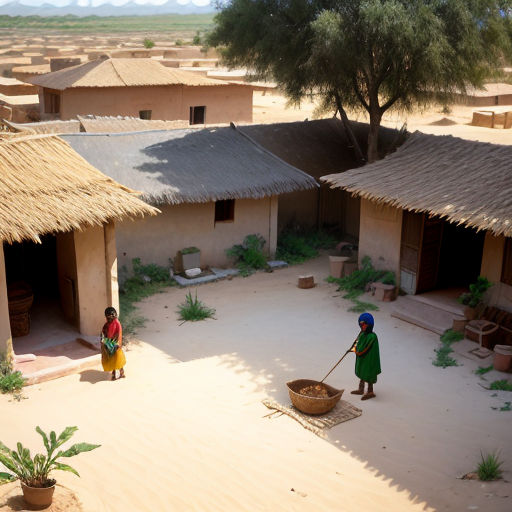
In the heart of Sudan, where desert sands kissed the vast sky, lay a small village. This humble village, best known for its mango trees, was home to a young girl called Fatima.
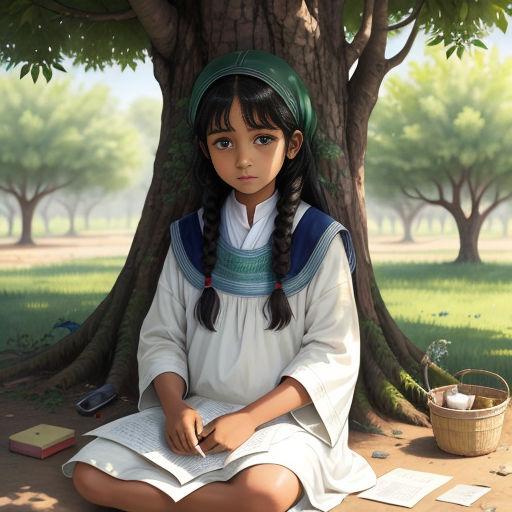
Fatima was unlike other children. Often, while others played in the sand, she would sit under a mango tree, her small hands scribbling on old bits of paper.

Her drawings, while rudimentary, reflected her world. Sometimes, it was the beautiful mango tree she sat under. Other times, it was the sound of distant gunshots echoing in the night.
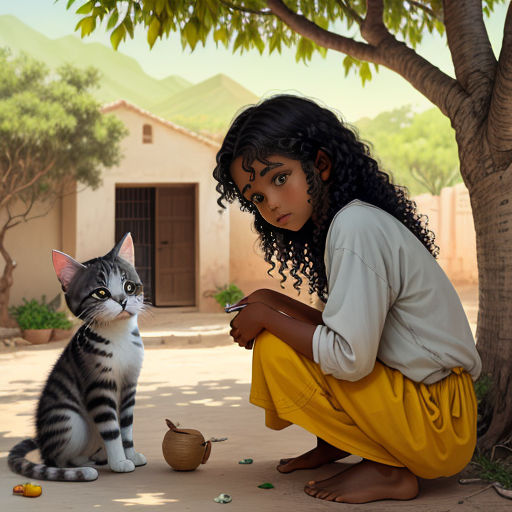
One day, while Fatima was sketching under her favorite mango tree, she noticed a small, malnourished kitten. The kitten seemed to be just as lost and alone as she felt.

Fatima decided to share her small meal with the kitten. She found joy in the little creature's happiness, an emotion she had not felt in a long time.
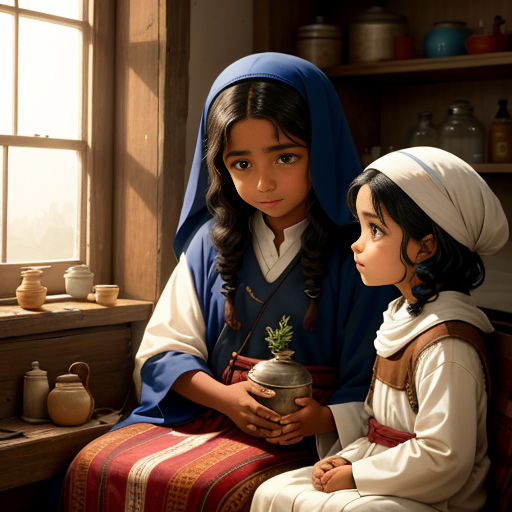
The kitten quickly became her companion. Fatima even named it "Hope," for it breathed into her life what seemed to have disappeared in the surrounding chaos.

Fatima's drawings became more vibrant, with the characters smiling and the sun shining brightly. Hope, too, found solace in her presence, purring softly whenever she was near.
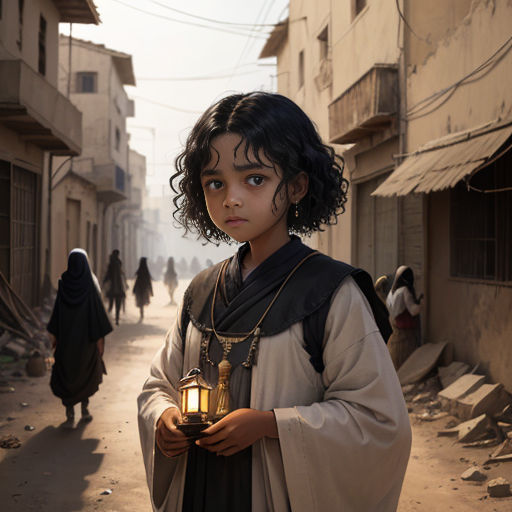
But the war was never too far away. One night, the sound of gunfire grew louder, interrupting the peaceful chirping of crickets. There was panic in the village, people running and shouting.
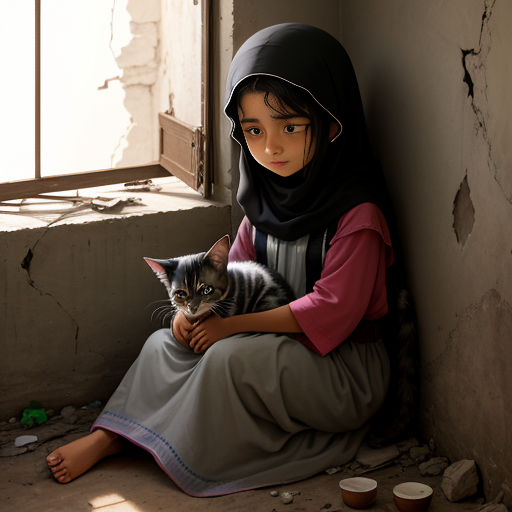
Fatima held Hope close, whispering to her words of comfort, even though she herself was trembling with fear.
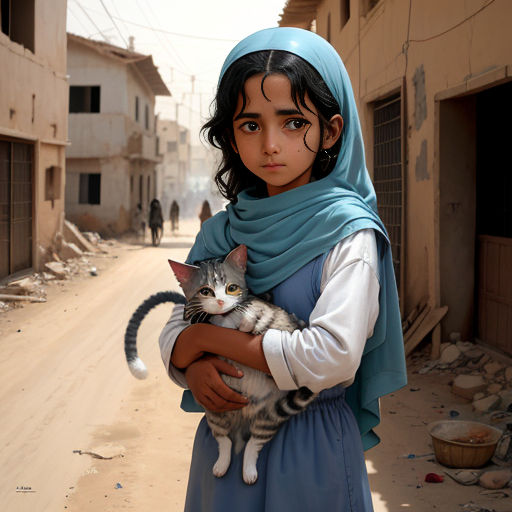
This was not the first time war had come to their village, and Fatima knew what she had to do. She gathered her belongings and wrapped Hope in a soft cloth.
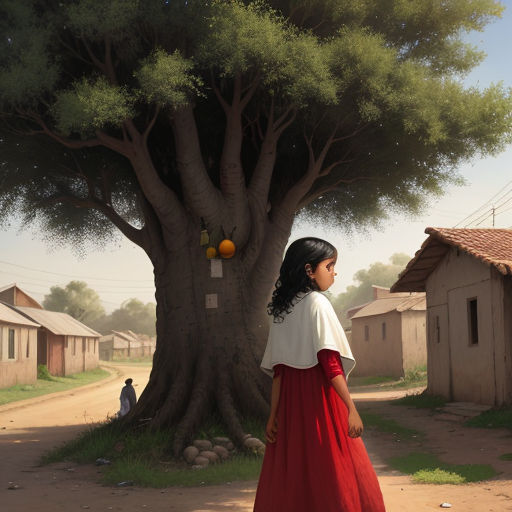
They needed to flee. But as she headed towards the outskirts of the village, her heart ached at the sight of her favorite mango tree, standing tall amidst the chaos.
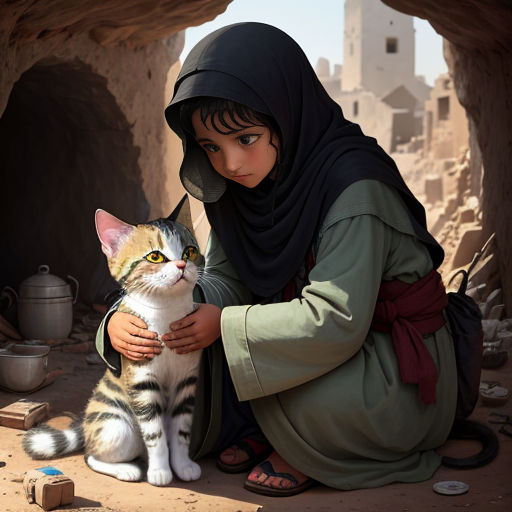
Through the chaos of the night, Fatima and Hope found refuge in a cave on a nearby hill. From there, they could see the flickering lights of their village being consumed by war.
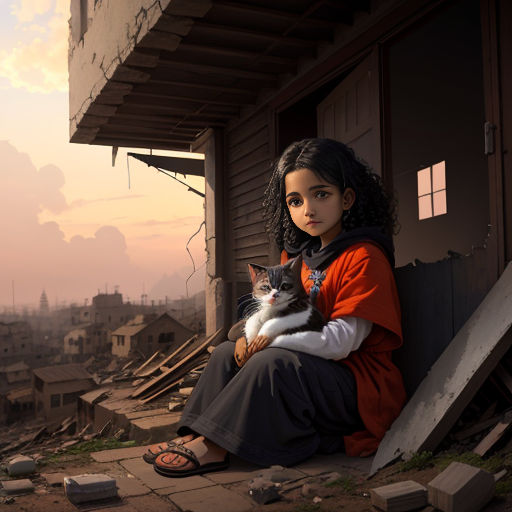
As dawn arrived, the sounds of war faded. Fatima, with Hope nestled against her, watched in heartache as her home turned into ruins.

She spent the day in the cave. The only food she had were a few mangos she managed to take from the tree, which she shared with Hope.
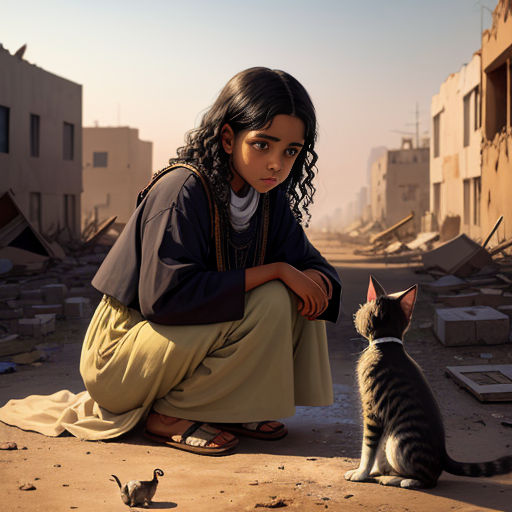
Hope's presence was a comfort in those difficult hours. Even though they had lost their home, they still had each other.
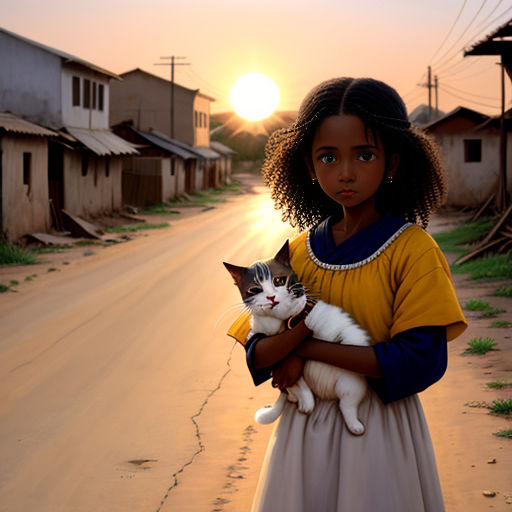
As the sun began to set, Fatima finally mustered the courage to leave the cave. She carried Hope towards their devastated village.
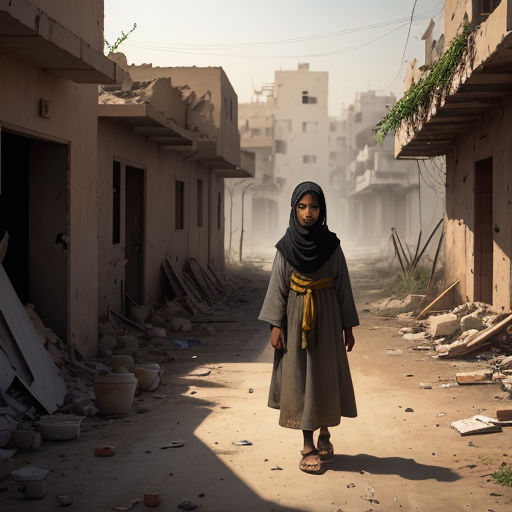
Amidst the rubble and ruin, she found her favorite mango tree. It was scarred and burnt, but like her, it still stood, a symbol of resilience and hope.

Fatima found solace under the mango tree. She sat there with Hope, drawing once again. She sketched their tree, scarred but still standing.
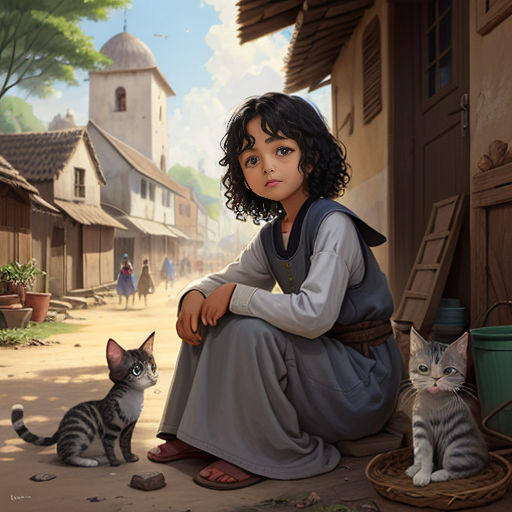
Days passed. The tree provided not just shade but food too. The villagers slowly began to rebuild their homes, and life continued, albeit differently.
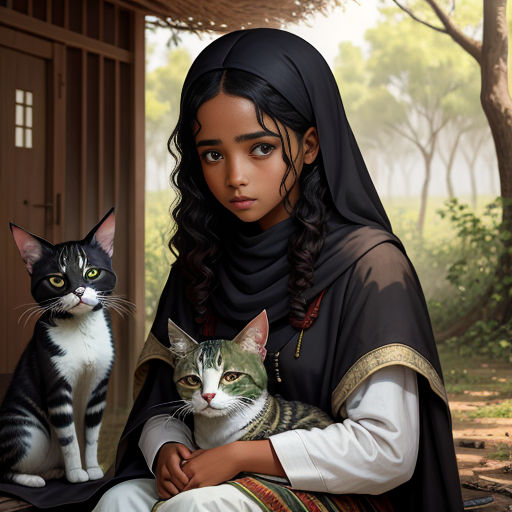
Fatima made a small shelter under the tree for herself and Hope. Here, they found peace amidst chaos, a safe haven amidst destruction.
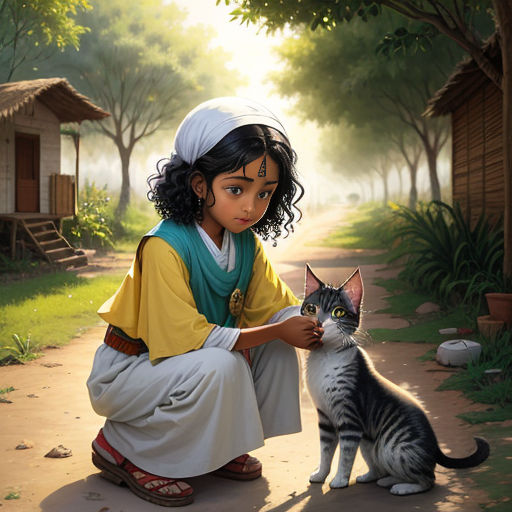
Hope, too, grew stronger each day, racing around the base of the mango tree, her eyes glimmering with a renewed sense of life.
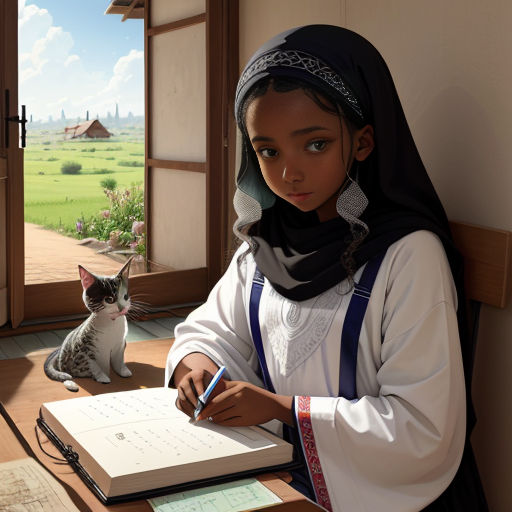
With every passing day, Fatima's drawings evolved, reflecting the strength and resilience they had found. Her sketches now filled with images of their tree, their home, and Hope.
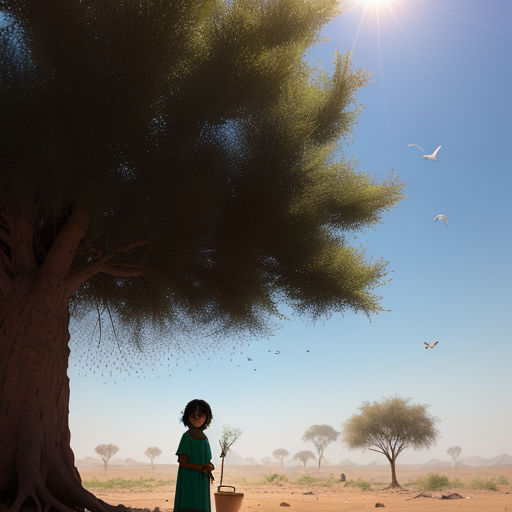
Time passed, and green sprouts appeared on the scorched branches of the mango tree. To Fatima, it was a sign of hope, a symbol of life pushing through the harshest of conditions.
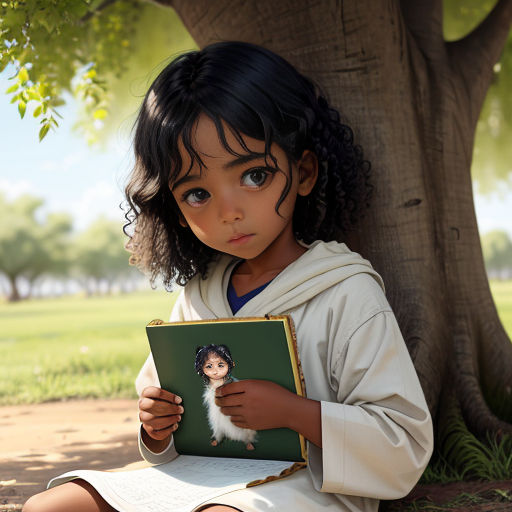
Even though life was not the same as before, Fatima found happiness under the mango tree, amidst her drawings and with Hope by her side.
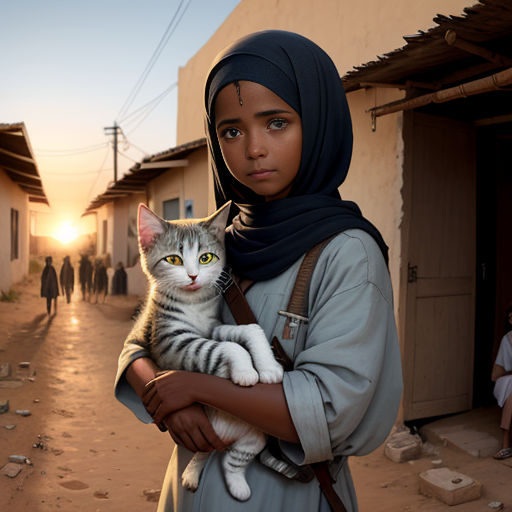
One day, a group of aid workers arrived at the village. They had come to help those affected by the war and rebuild the village. Fatima, with Hope by her side, watched as they efficiently set to work.

The workers set up a temporary school for the children. It was a simple, open-air structure under the shade of a large baobab tree. Fatima decided to attend the classes they held.
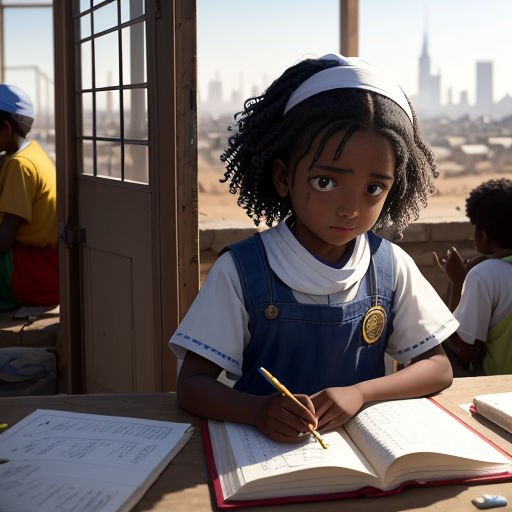
In these makeshift classes, Fatima discovered a new world. The workers taught her to read and write. Soon, she started to express her thoughts and feelings not only through drawings but words too.
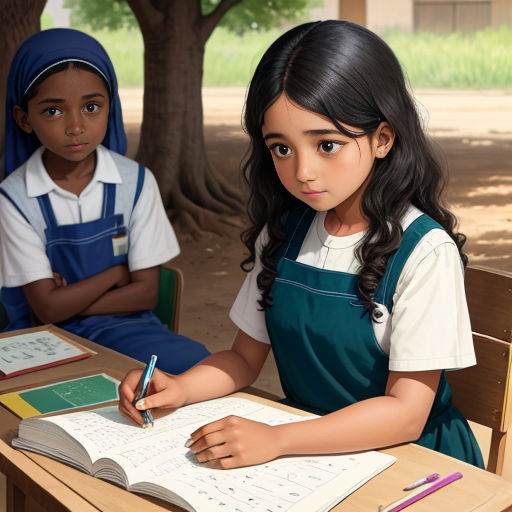
Fatima's creativity flourished. Her descriptions were vivid, her stories filled with emotion. The workers were impressed by her talent. They encouraged her, providing her with books and more papers.
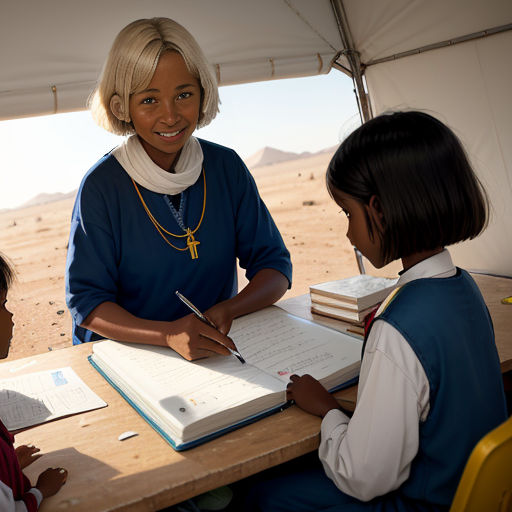
One day, a worker named Hannah took particular interest in Fatima's works. Hannah was a journalist, documenting the effects of war on children. She saw potential in Fatima's drawings and stories.
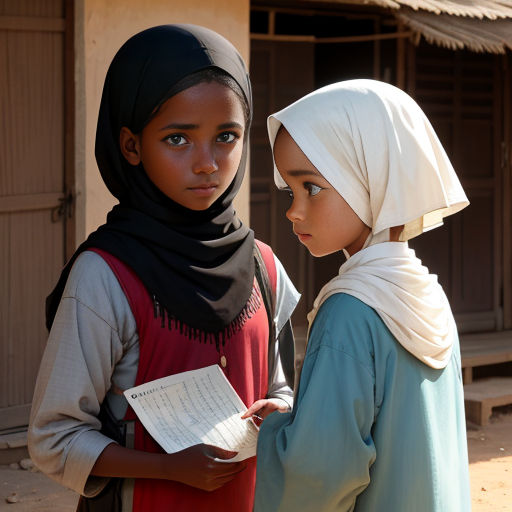
Hannah asked Fatima if she could share her work with the world, to show them what children here were going through. Fatima, apprehensive at first, agreed when Hannah promised it would help bring change.
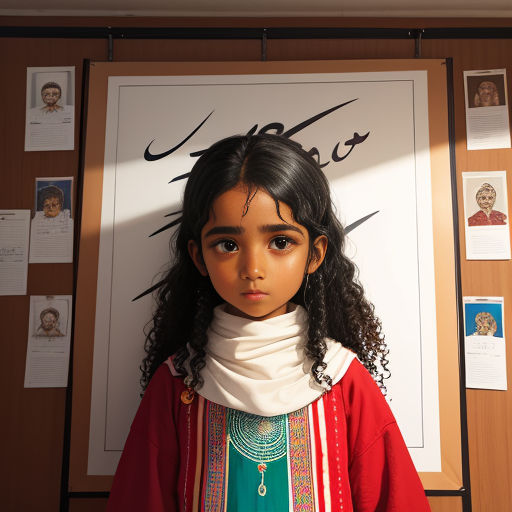
Fatima's work soon travelled beyond the borders of Sudan. People around the world were moved by her drawings and stories, bringing attention to the plight of war-torn communities.
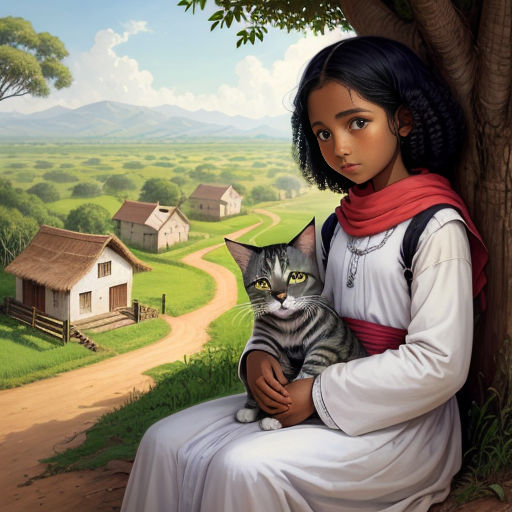
Change came gradually. More aid poured in and slowly life began to improve in the village. The mango tree under which Fatima and Hope lived, became a symbol of their resilience.
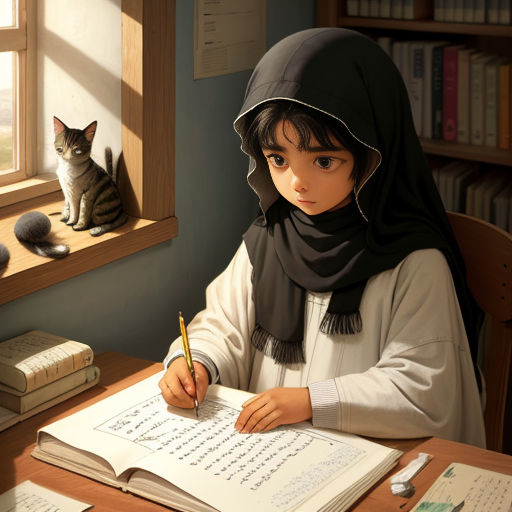
Despite all the changes and attention, Fatima remained humble. She continued to write and draw, pouring her thoughts and experiences onto paper. Hope remained by her side, a constant comforting presence.

Together, they carved out a simple life amidst the echoes of war, treasuring each day as a gift. The mango tree, their refuge, continued to stand tall, bearing witness to their journey, and that of their village.